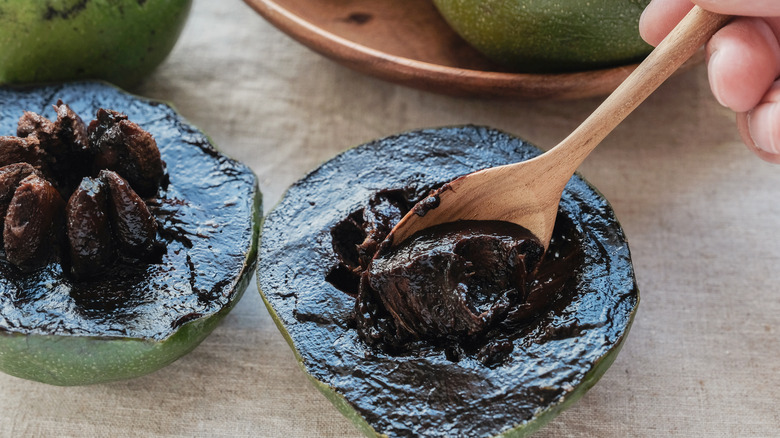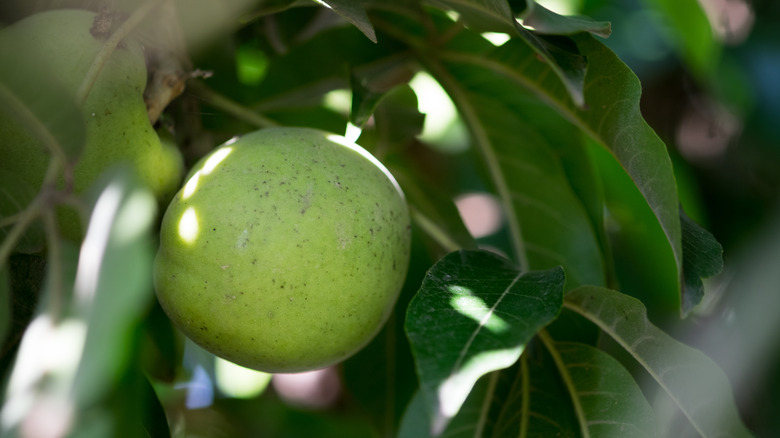The Real Difference Between Black And White Sapote
The world of fruit is much broader than what may wind up in your grocery store produce section. Take sapote, for example. Varieties of this soft-fleshed, super-sweet fruit are considered rare in the U.S. but are common eats in Southeast Asia, as well as south and Central America, according to FruitStand. The site explains that sharing the monicker "sapote" doesn't necessarily indicate a similarity in flavor or mean the fruit's many name-sharing varieties are interchangeable.
Instead, the term's origins are thought to be related to the Aztec word "tzapotl," which FruitStand says is used to describe "any soft, sweet fruit." There are many different versions of the fruit, including black and white sapotes. But as soft and sweet as both varieties may be, it's not just their color that makes the two fruits different. Black sapote is a close relative of the persimmon, according to The Spruce, and is sometimes referred to as the "chocolate pudding fruit" due to its taste, pudding-like texture, and dark, chocolatey hue, says FruitStand.
What about white sapote?
In contrast, white sapote is more closely linked to citrus (although not very closely), and, as Strange Wonderful Things points out, the fruit tastes nothing like citrus. Instead, when you crack into the yellow to green skin of white sapote and dig a spoon into its creamy white, custard-like middle, the fruit tastes soft and sweet with no hint of the acidity a citrus fruit would offer. (The flavor is said to be somewhat banana-like or reminiscent of a pear or peach.) The white sapote is nicknamed the 'Mexican apple" due to its likeness to certain types of green and yellow apples and its prominence in Mexico, according to FruitStand.
The similar but different black and white sapotes aren't the only variants of the fruit. There is also the Ross sapote, which contrasts the black and white versions with an orange-colored flesh and light-orange exterior. The Mamey sapote, the largest variety in the sapote family, boasts bright red flesh and looks kind of like a "smoother version of a coconut" when fully grown, says FruitStand.
Whichever sapote type you're slicing into, you're in for a fruit with custard-creamy texture and a heavy dose of sweetness.

